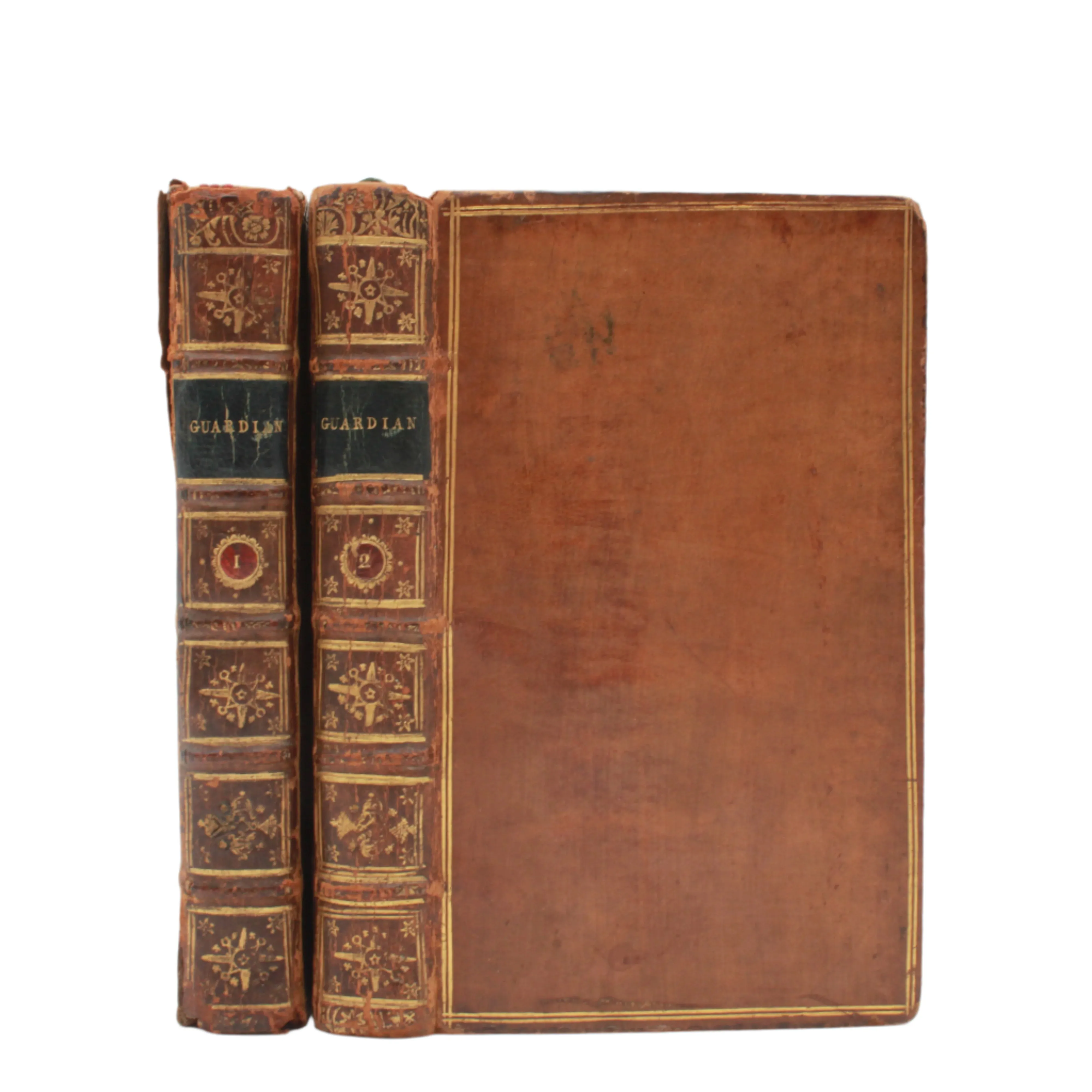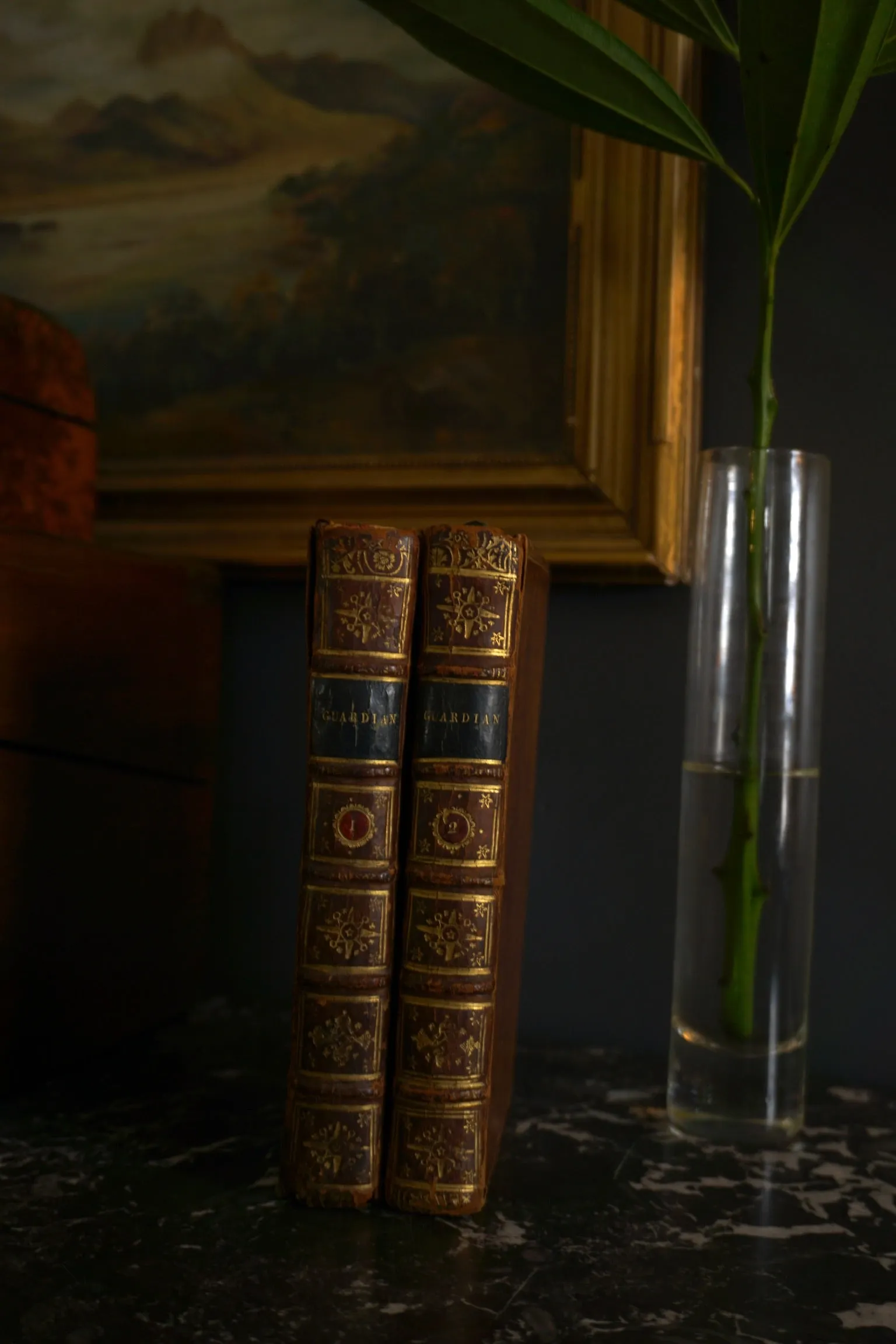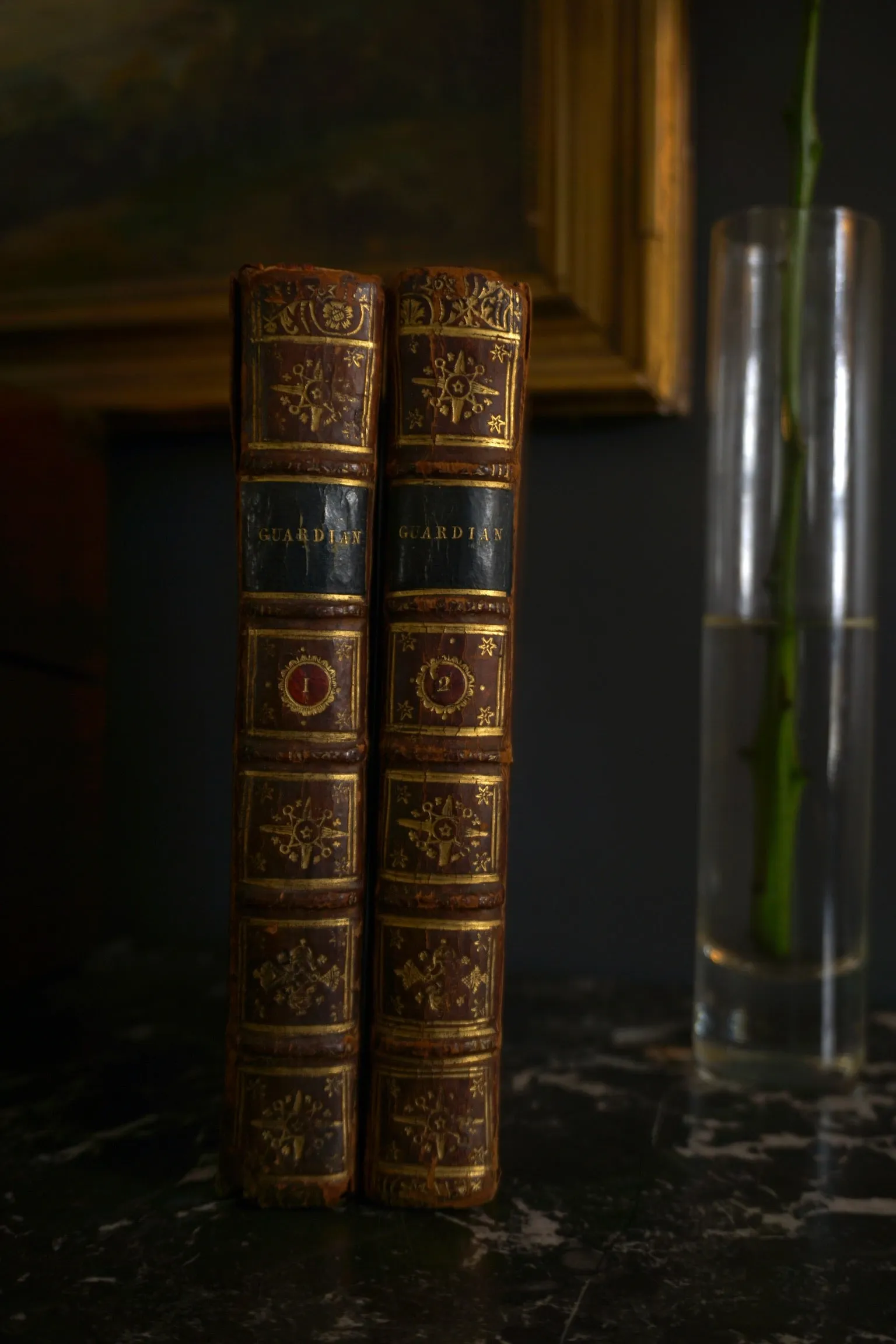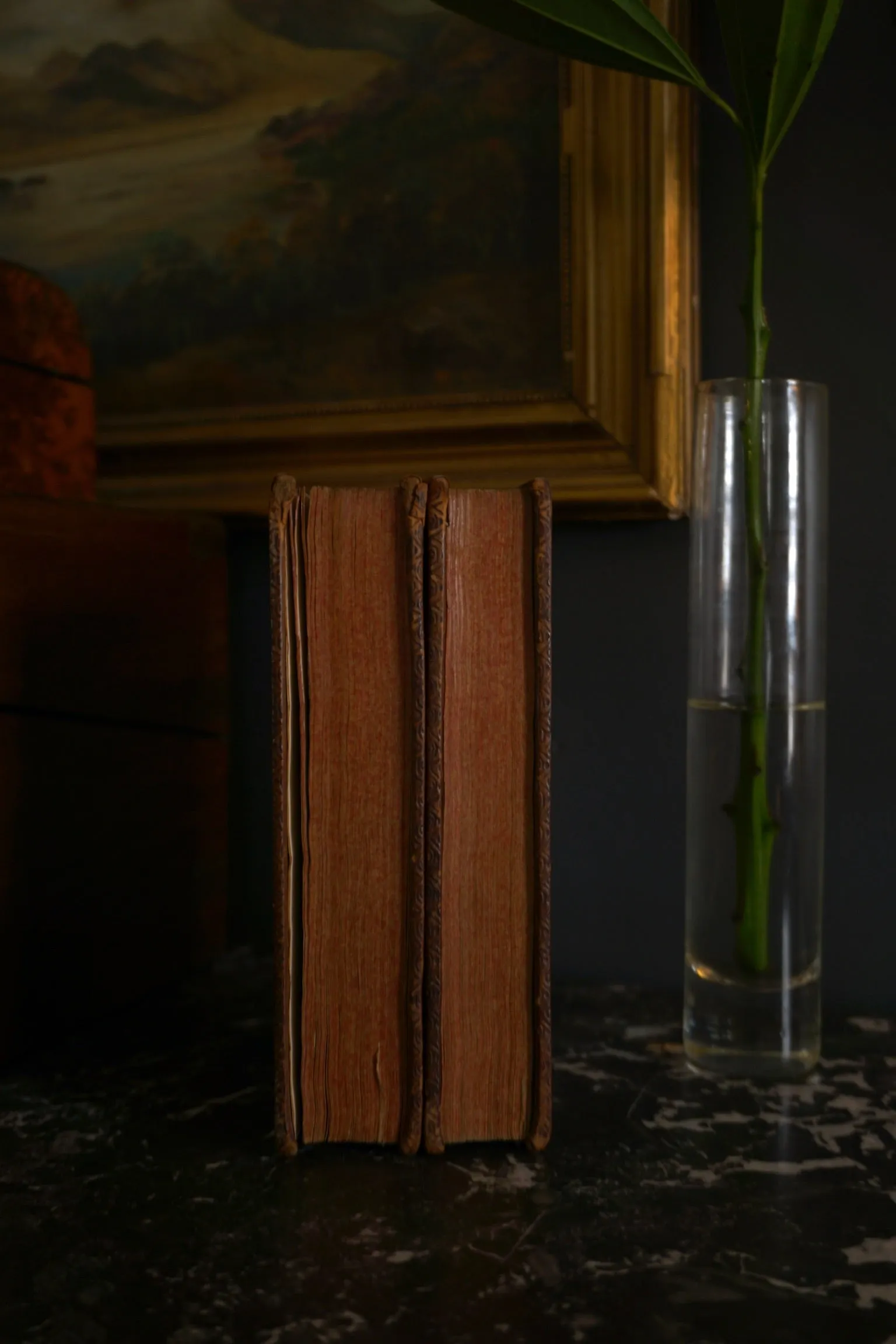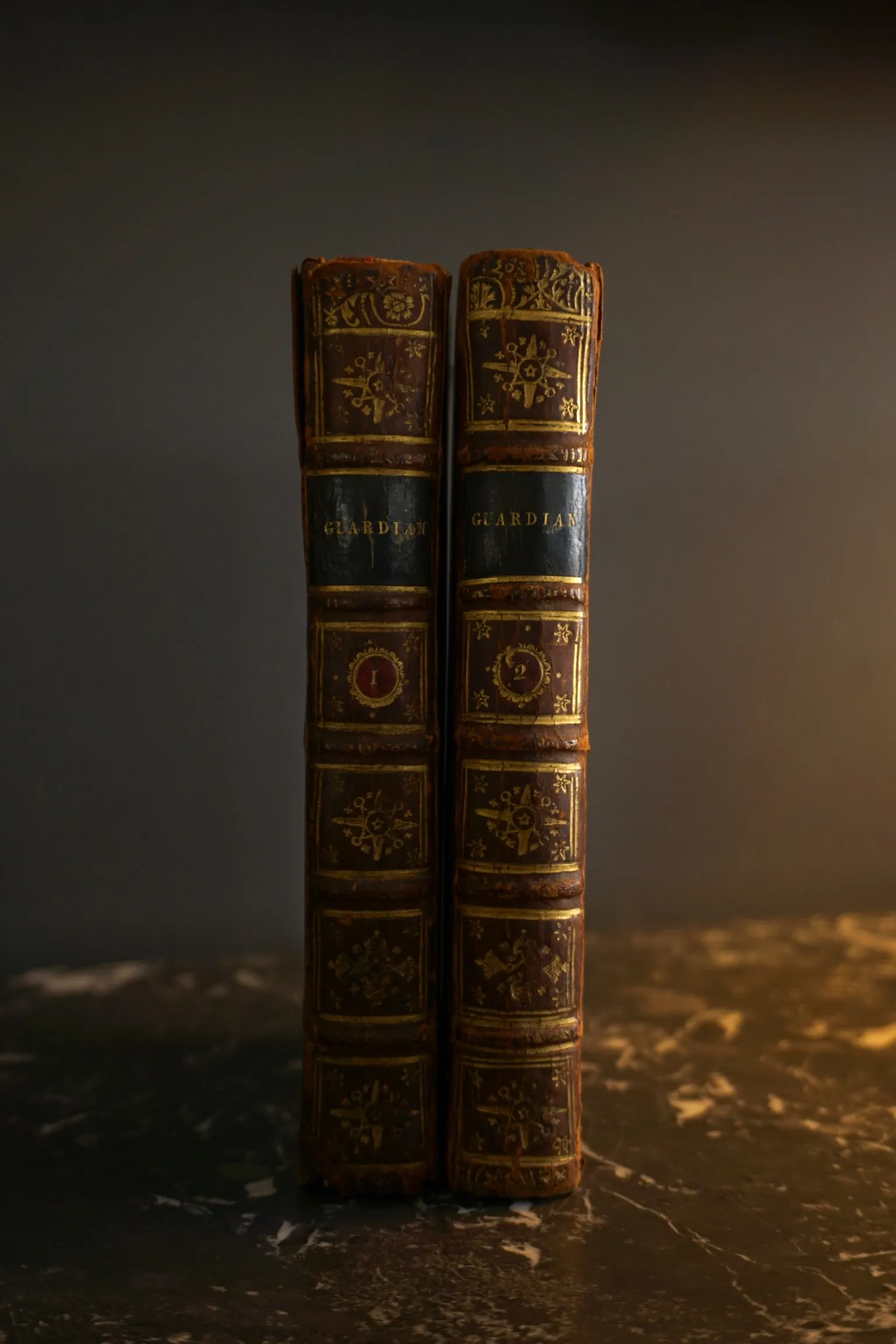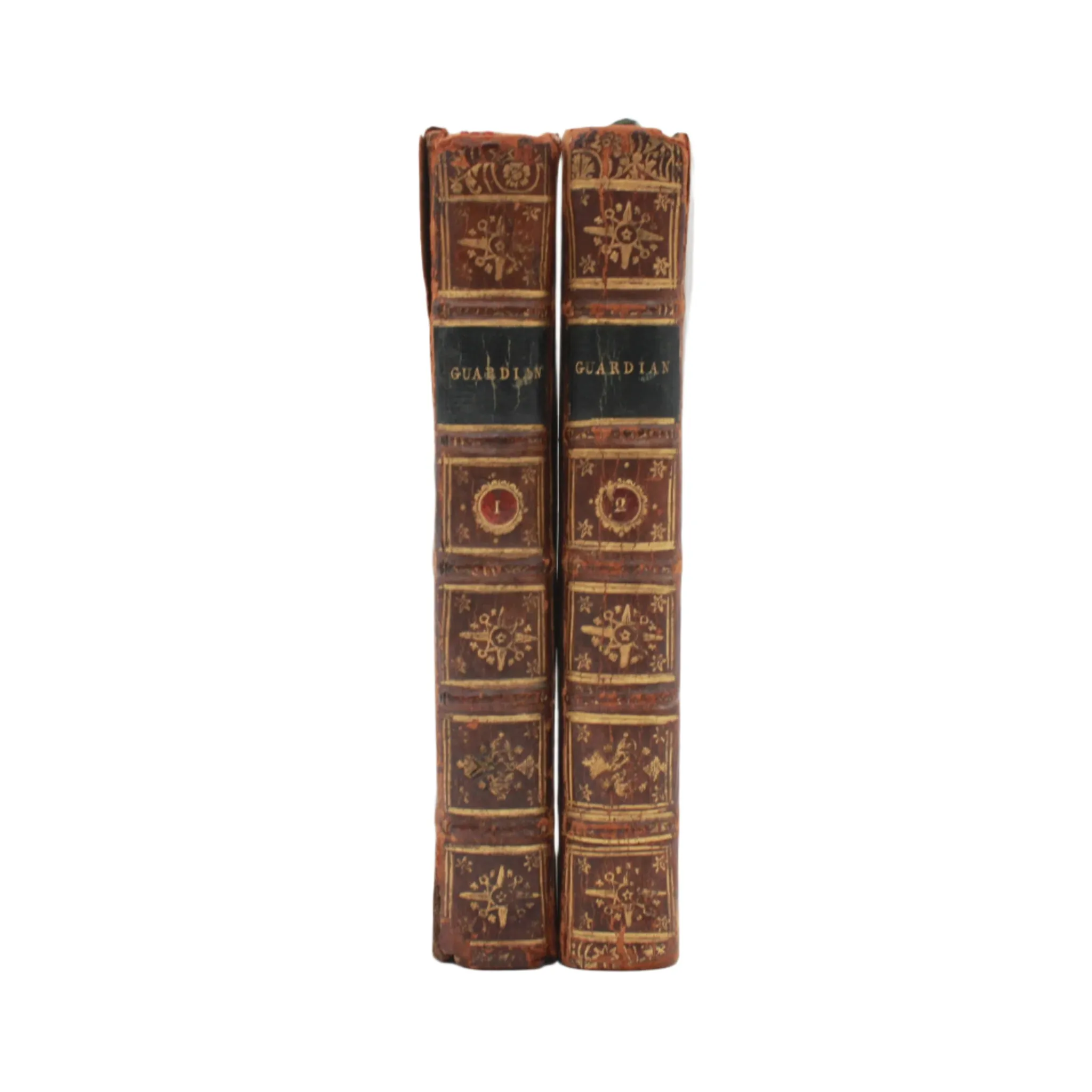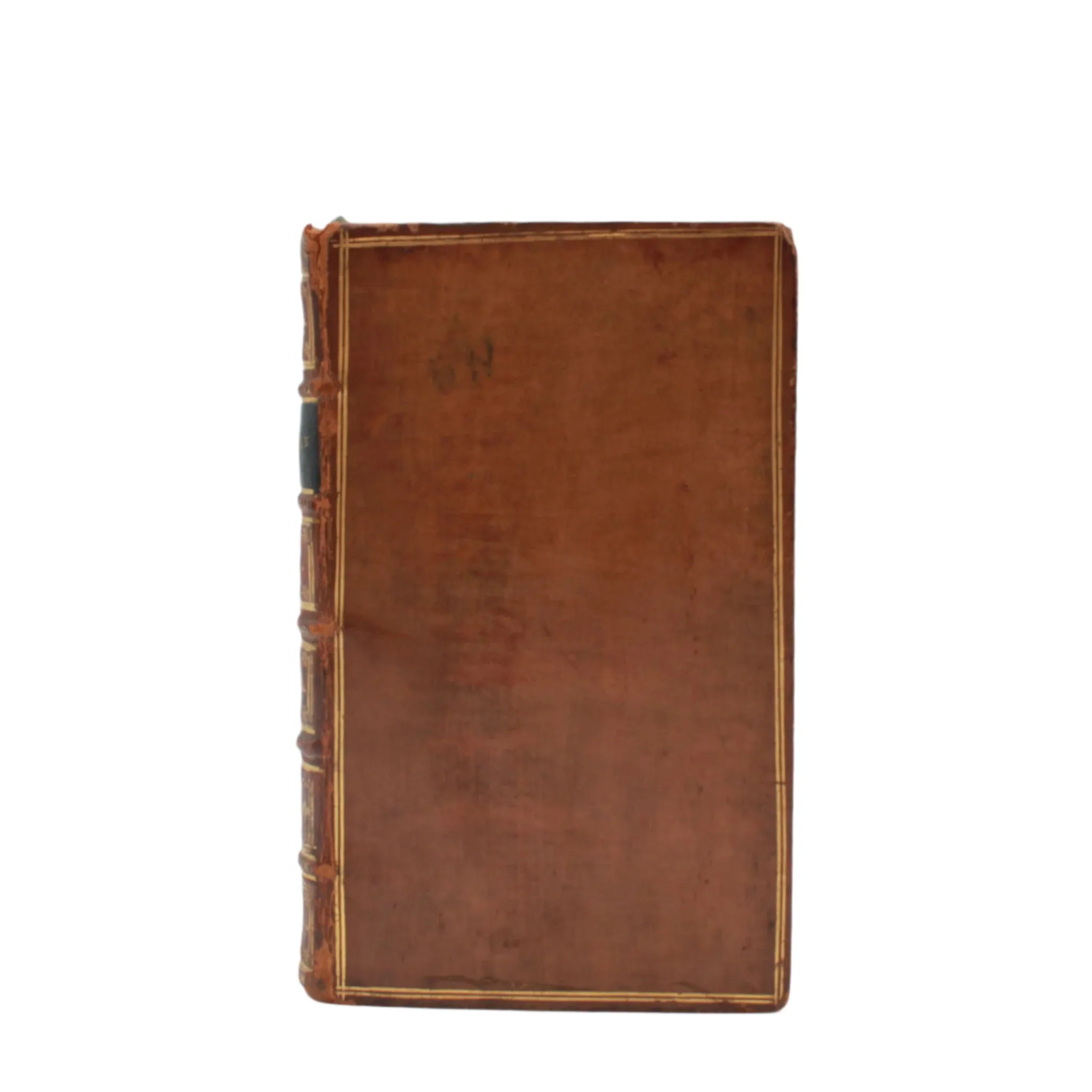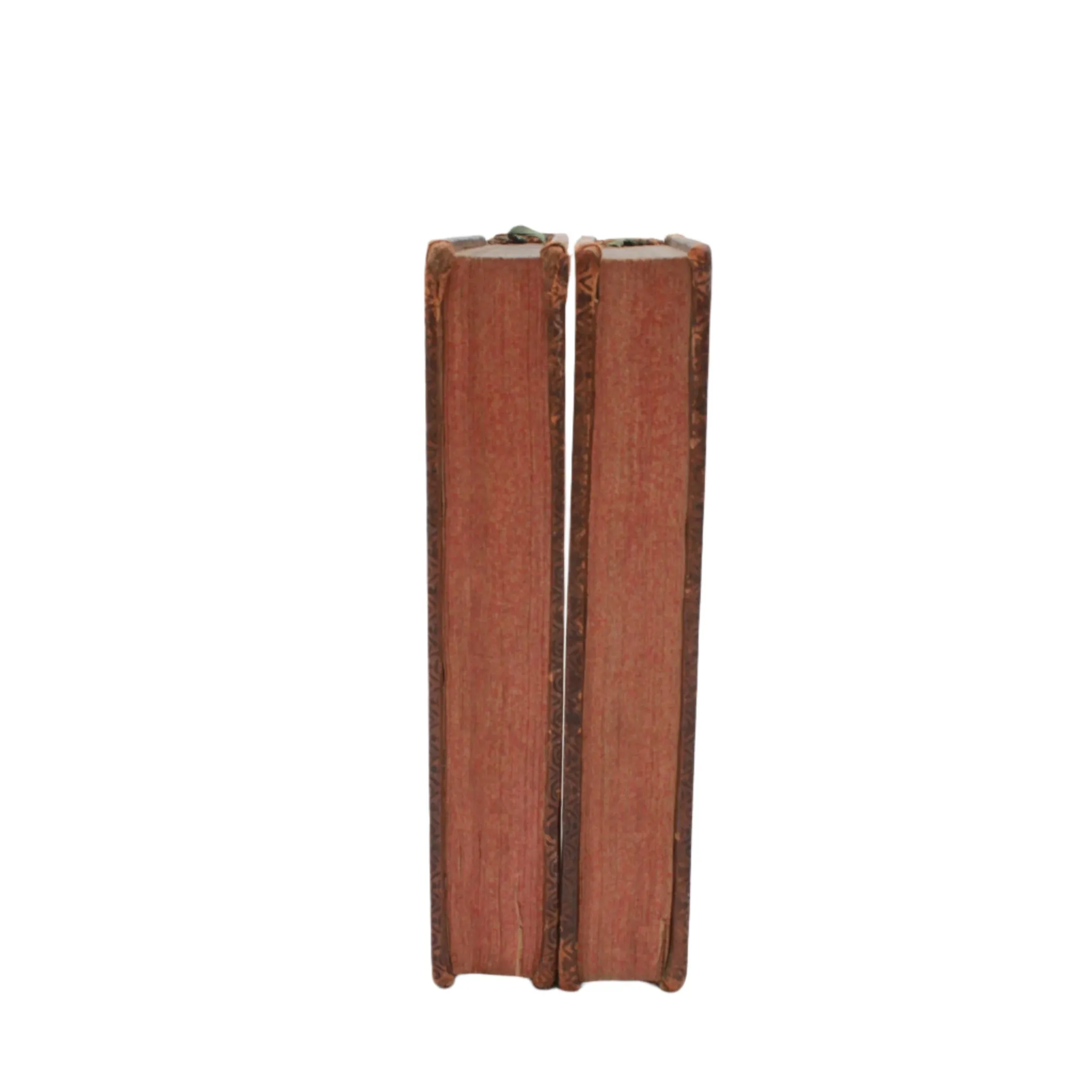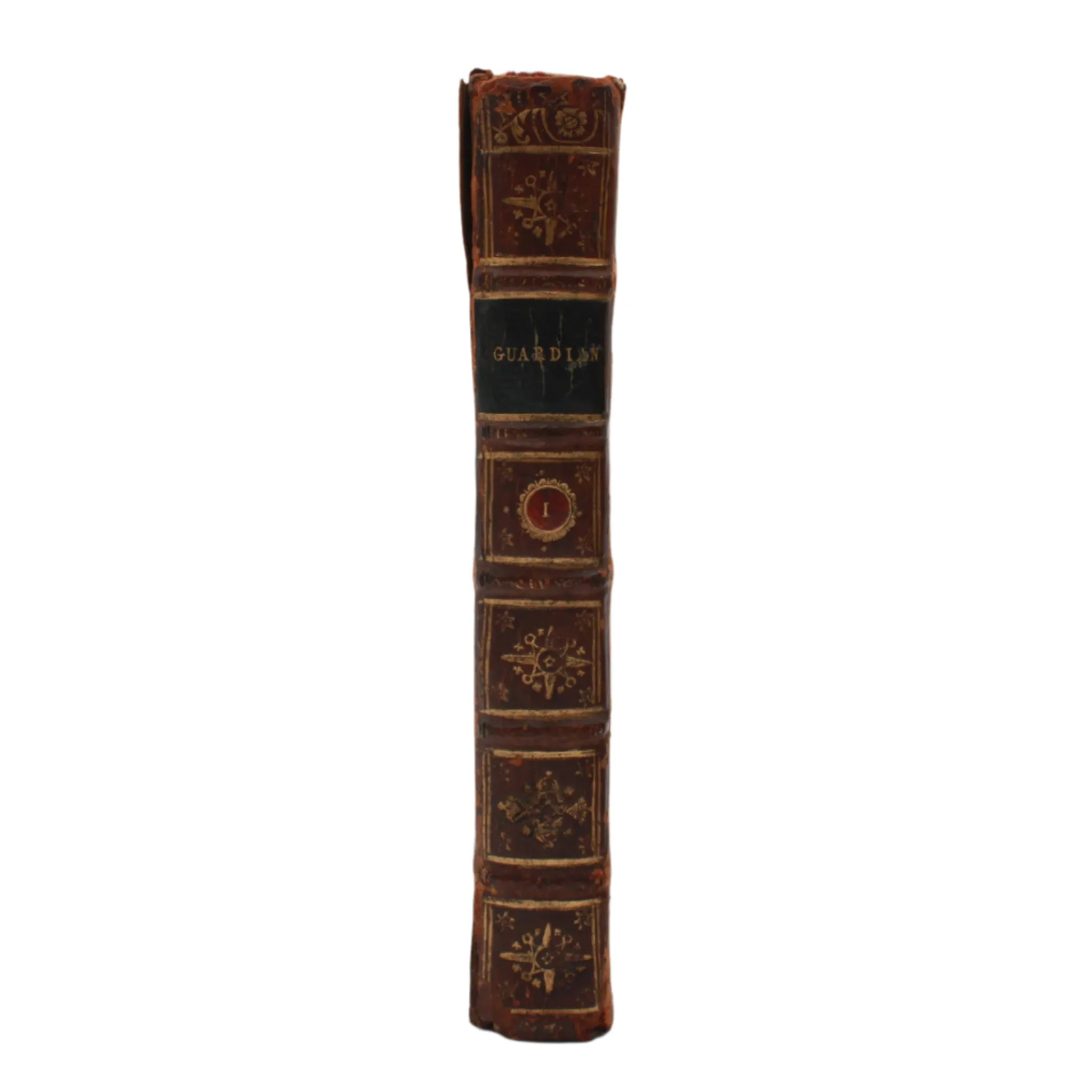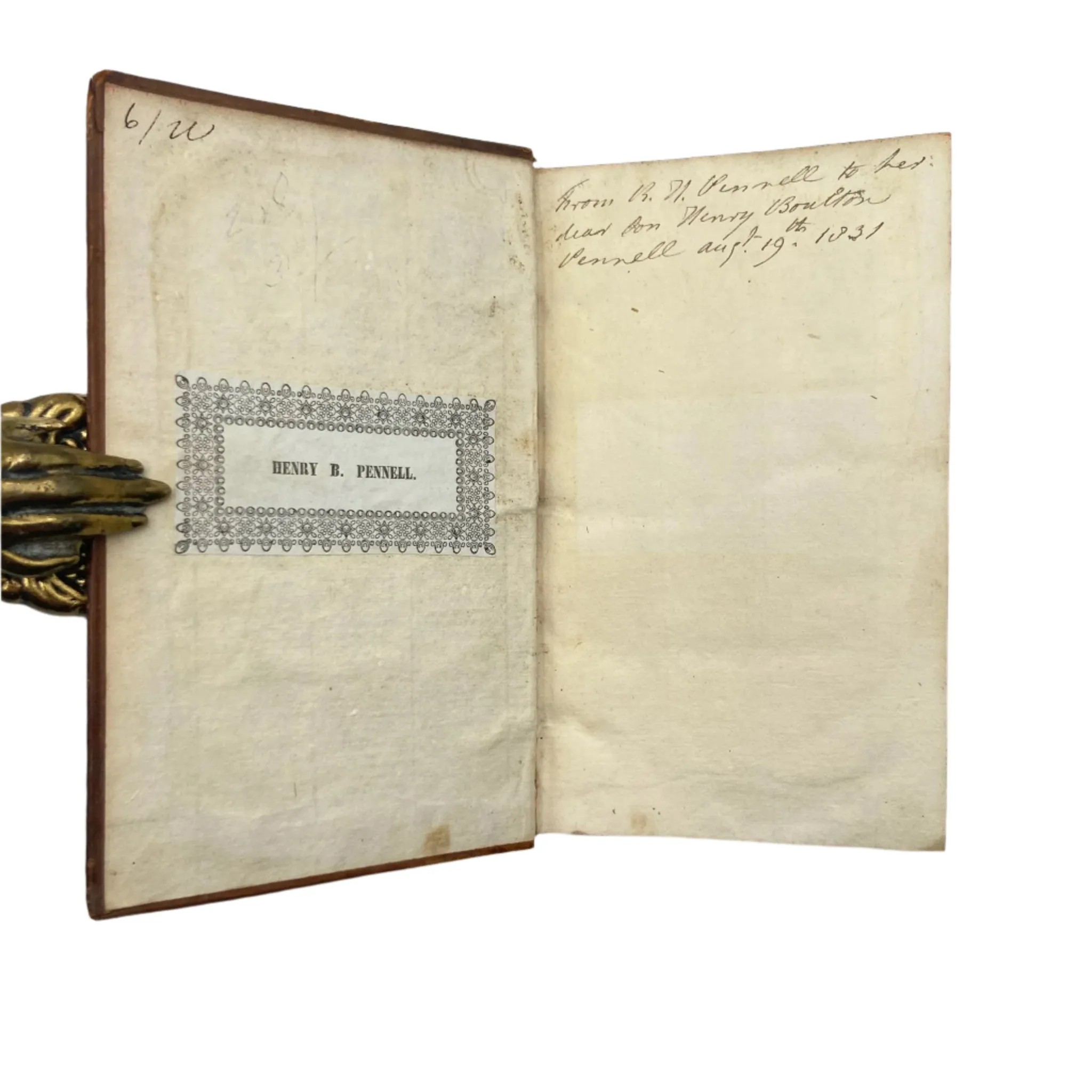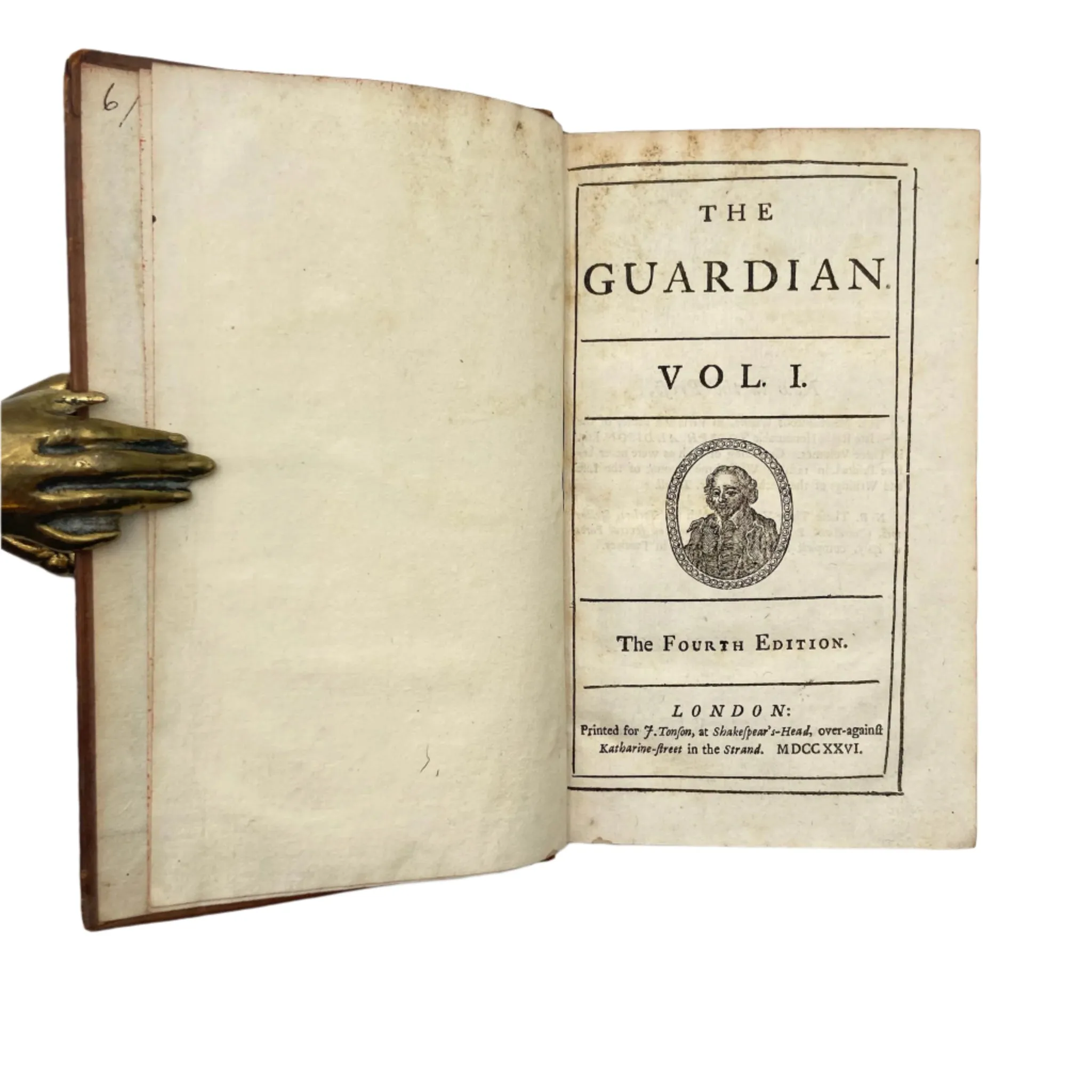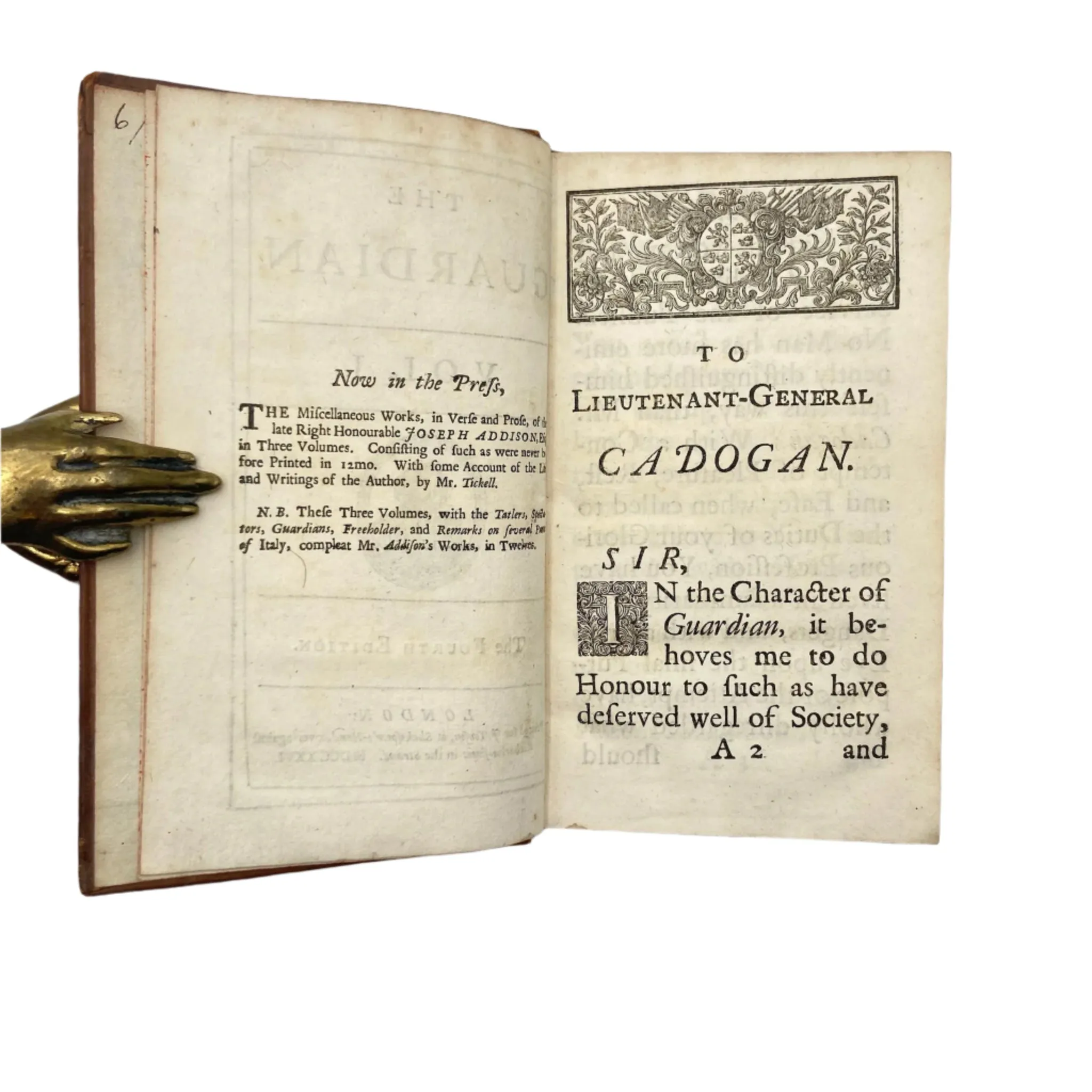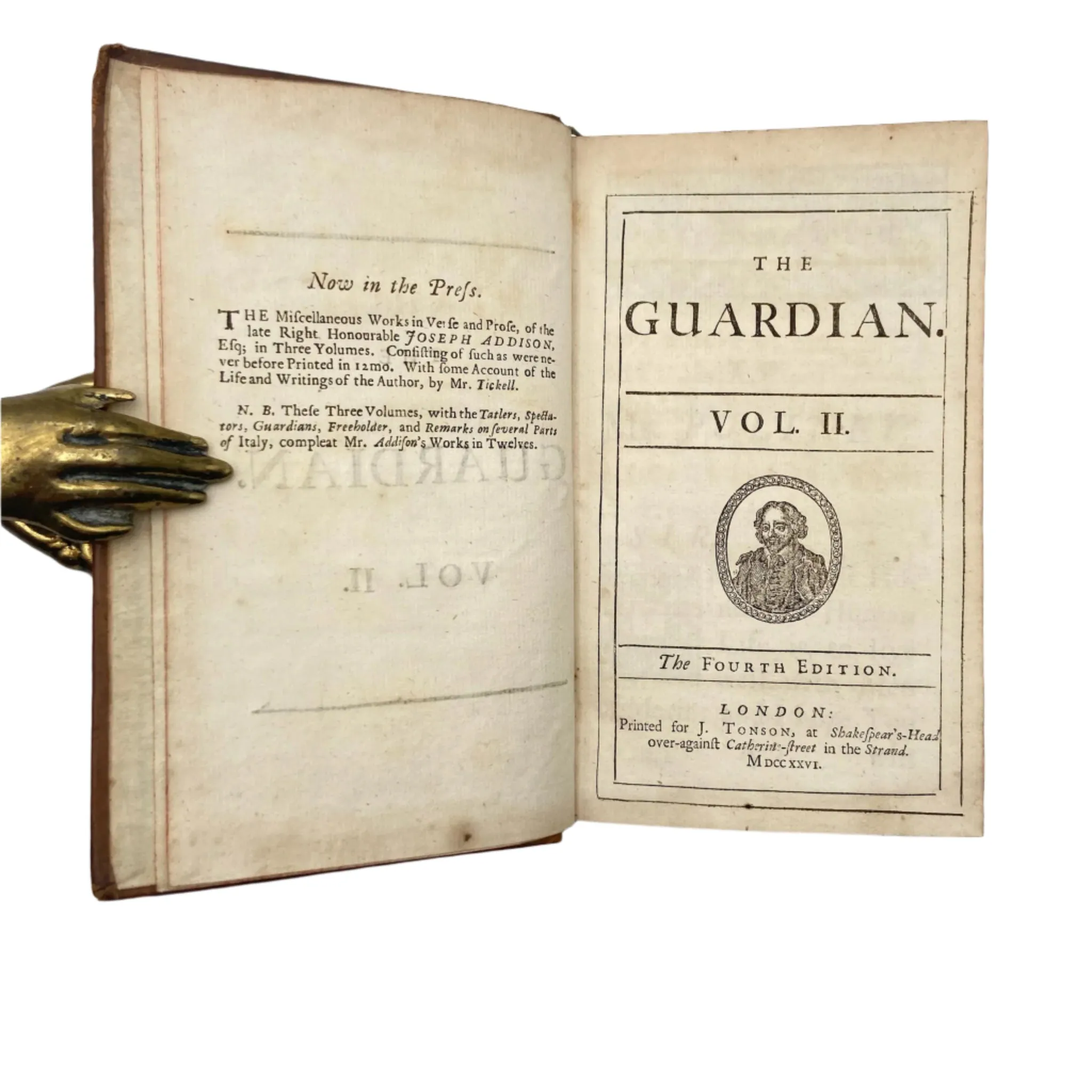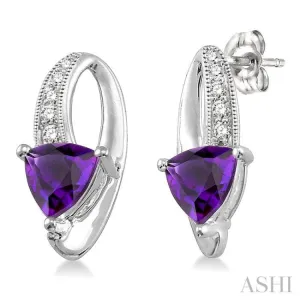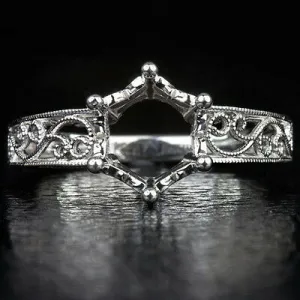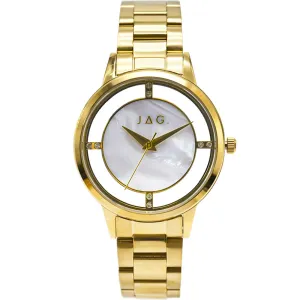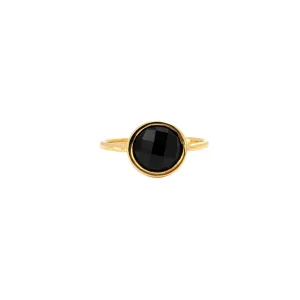Written In English
The Guardian was first issued as a periodical by Joseph Addison and Richard Steele in 1713, following on the success of their earlier collaborations, The Tatler and The Spectator. This particular two-volume set is identified on its title pages as the “Fourth Edition” and bears the publication date of 1726 (MDCCXXVI), with the imprint noting J. Tonson in the Strand, London. Thus, it represents an early 18th-century reprint of the collected essays that originally appeared in the daily paper format for a brief period in 1713. The Guardian contained moral, literary, and social commentaries aimed at cultivating polite discourse and virtuous behavior among its readers, very much in line with Addison and Steele’s broader mission to refine and educate the public through accessible, engaging prose.
When Addison and Steele began publishing The Guardian, they were building on a tradition of periodical essays that sought to shape contemporary manners and tastes. Britain at the time was experiencing vibrant intellectual and cultural currents, with coffeehouses emerging as hubs of debate, and an increasingly literate middle class eager for informative yet entertaining reading material. Addison and Steele’s publications offered concise essays on a range of topics—literary criticism, social conduct, political commentary—written in a style that balanced wit and moral instruction. This approach made The Guardian (though shorter-lived than The Spectator) an influential piece of the early 18th-century English Enlightenment scene.
From a bibliographic standpoint, this 1726 “Fourth Edition” is notable for its handsome contemporary binding. Each volume is bound in polished calf with gilt tooling on the spine, including compartments formed by raised bands and contrasting title labels. The red-speckled or red-tinted page edges are typical of 18th-century binding practices, lending a touch of color and modest protection to the paper. The presence of a bookplate, along with any handwritten inscriptions, adds personal provenance to the set, hinting at how these volumes were passed down or gifted across generations.
In simpler terms, The Guardian is a collection of early 18th-century essays meant to entertain and edify the public, continuing Addison and Steele’s project of guiding social manners through well-crafted prose. Published in 1726, this two-volume fourth edition showcases not only the periodical’s historical importance but also the elegant craftsmanship of early Georgian bookbinding.
Condition:
Overall, these volumes appear to be in good antiquarian condition. The calf covers show wear consistent with age, including rubbing to the edges, corners, and spine ends. The gilt tooling and raised bands, though dulled in places, remain visible and contribute to the set’s classic aesthetic. Internally, the pages exhibit light browning and occasional foxing, typical of 18th-century paper, but the text remains legible throughout. The hinges are likely delicate yet still functional, given the books’ age, and inscriptions or bookplates inside add to the sense of historical ownership. In sum, it is a well-preserved and charming example of an influential Addison and Steele periodical, reflecting both the intellectual culture of the early 1700s and the fine binding traditions of the Georgian era.




